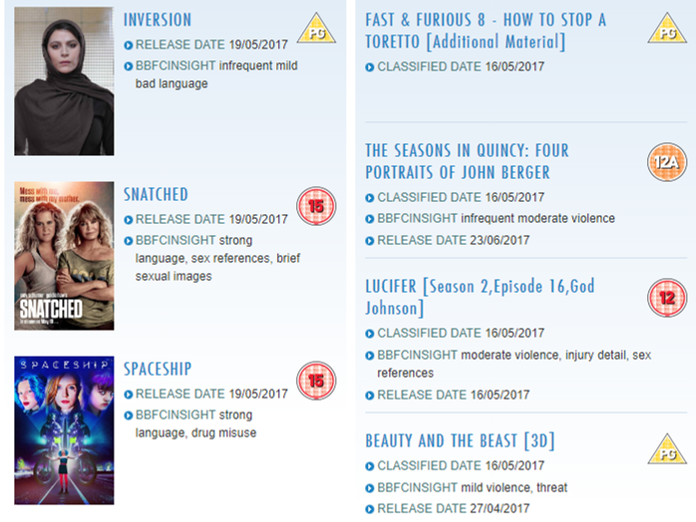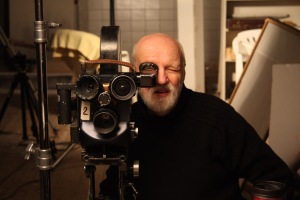Regulation exists in every media sector, this is because in every media sector there are legal and ethical constraints.
Firstly here are some examples of Ethical Constraints within the Media Sector:
Ethics:
Ethics are what is right and wrong, which can vary between views by people within society. It can be a very broad line between what is considered ethically right and wrong, which is why we need regulators in place to investigate certain media when complaints have been received.
Social Issues and Sensitivities: Particular care should be taken to avoid causing offence on the grounds of race, religion, sexual content, gender/sexuality, language or disabilities. These must all be considered so that the media does not offend, misrepresent, or upset specific sections of the public or individuals within any groups. Some examples of advertisements that the Advertising Standards Authority (ASA for short) banned due to complaints regarding social issues and sensitivities can be seen below:
The Antonio Federici advertisements received a number of complaints due to the sexual nature regarding the Roman Catholic faith. This is both offensive to certain people on the grounds of religion, and it’s sexual nature.
The idea of a nun being pregnant is considered wrong in the eyes of the Roman Catholics, so the fact that this nun appears to have gotten pregnant, along with the caption “immaculately conceived” is likely to offend many people. Really though, “immaculately conceived” is purely talking about the ice cream she is eating in the image.
The evident homosexual sexual orientation of the two priests is considered offensive due to Roman Catholics typically being against the idea of a sexual relationship between two men, and the mere fact that they are priests is the tip of the iceberg, as it shows that they are indeed Roman Catholics themselves. The caption “We believe in salvation” shows that they believe that despite their actions being against the catholic church, they believe in deliverance from sin and its consequences. This received 6 complaints.
The Priest and Nun are implied to be having intercourse on the second part of the ident, and this is very offensive as it shows two people, whom in the eyes of the religious should not be partaking in intercourse, these being a nun and a priest. The tagline “Submit to temptation” is a double entendre, whilst seemingly talking about the sexual nature of the images, is actually just referring to the ice cream, and the temptation of wanting to eat it.
Another advertisement was assessed by the ASA due to 13 complaints on religious grounds (particularly as it was Christmas time), but in this case, it was not upheld, as it was not considered in breach of the harm and offense code. The ASA said “We acknowledged that the ad might not be to everyone’s taste; however, we considered that most consumers would understand that it was light-hearted take on the biblical story rather than a mockery of Christian belief.”
The image can be seen below.

Another example of social issues and sensitivities in the media industry is when Jeremy Clarkson, in the highly popular BBC car show ‘Top Gear’, used a racial slur, when referring to a slope on a bridge they had built, as an Asian man walked over it. Clarkson remarked: “That is a proud moment. But there’s a slope on it.” (slope being an offensive term for Asian people), to which Richard Hammond replied with “you’re right, it’s definitely higher on that side”, showing that the were infact talking about the bridge.
Nonetheless, this clip gained complaints and Ofcom did deem it unacceptable and in breach of it’s code due to the language used to refer to a person of Asian descent.
The clip can be viewed below:
Ofcom, who investigated after two viewers complained, said the use of the word “slope” was offensive, and breached broadcasting rules by including an offensive racial term in Top Gear, which was not justified by context.
The shows producers admitted that they understood the meaning behind the word, but thought of it as nothing more than a slang word, it was scripted and they had lots of opportunities to change this in pre-production.
After the Ofcom ruling, the BBC had this to say of the incident: “We dealt with this matter some time ago, the programme apologised at the time and explained the context, and we are now focusing on delivering another series of one of Britain’s best loved shows.”
Legality:
Legal constraints are the laws in place that can potentially restrict and control the output of any media sector. If these laws are not followed, then the media will most likely be investigated by the police.
A law in place in britain is the ‘Broadcasting Act of 1990’. The aim of this law is to improve the structure of British broadcasting. Another example is the Privacy Law, in which person details and information of people is not allowed to be published within any type of media. A good example of this is the battle between Marvin Gaye’s family and Pharrell Williams and Robin Thicke:
The song ‘Blurred Lines’ written by Pharrell Williams, and Robert Thicke, was released on the 26th of March 2013.
The family of Marvin Gaye thought that the song was eerily similar to ‘Got to give up’ by Marvin Gaye, and filed for a lawsuit. Thicke and Williams sued the family of Marvin Gaye for a judgement that deemed the song ‘Blurred Lines’ did not infringe copyrights of the defendants on August of the same year.
After a long and tedious battle, on March 2015, Pharrell and Thicke were found liable for copyright infringement, awarding Gaye’s family $7,400,000 in damages. The United States District Court for the Central District of California Judge John A.Kronstadt ruled for this outcome. Both Thicke and Williams still claim that they did not infringe copyright to this day.
Content, Interpretation, and application of laws relating to media:
An example of a law in place for the media is the ‘Race Relations Act of 1976’, which was lately amended to the ‘Equality Act of 2010’, which includes various laws (116 pieces of legislation to be exact), and places them into one single act, some of these are: the aforementioned ‘Race Relations Act 1976’, ‘Sex Discrimination Act 1975’, and ‘Disability Discrimination Act 1995’ among lots of others, the act is linked below for more legislation included within it:
http://www.legislation.gov.uk/ukpga/2010/15/contents
“The Act simplifies, strengthens and harmonises the current legislation to provide Britain with a new discrimination law which protects individuals from unfair treatment and promotes a fair and more equal society.”, according to the human rights website, linked in the references.
Another act is the ‘Copyright and Intellectual Property Law’, which helps to prevent content being plagiarized.
Professional Body Codes Of Practice: This includes the BBC producers’ guidelines, Worldwide Web Consortium (W3C), and accessibility standards, among others.
A Harry Potter-themed day in 2010 on BBC Radio 1 gave undue prominence to the film and breached editorial guidelines, ruled the BBC trust. The station’s Harry Potter Day was timed to coincide with the cinema release of Harry Potter and the Half-Blood Prince last year. Radio 1 broadcast 33 trailers promoting the day across 12 hours and 30 minutes of airtime.
The breach was in place due to the BBC Trust ruling that the product (Harry Potter) had been too heavily endorsed, this wasn’t the first time, in the past they had come under fire for the same reason whilst overselling coldplay’s Viva-la-vida tour.
Regulation and Professional Bodies: There are lots and lots of regulatory bodies in regards to the media industry, some of these being: The BBFC, the VSC, Ofcom, IPSO (Now known as PCC), the ASA, the MEF, the IGDA, BAFTA, CRCA, The IVCA, W3C, the FDA, TSC, TSN and BIMA.
Regulation Issues: There are Many issues in the regulation industry itself, such as: Ownership, monopoly, access, consumer choice, freedom of information, censorship, taste and decency.
The BBC (British Broadcasting Corporation) have always been independently regulated by the BBC Trust, Up until the 3rd of April 2017, when Ofcom, the broadcasting regulators, became the BBC’s first external regulatory body.
The BBFC (British Board of Film Classification) is the body that decides what age a film is suitible for, they give age ratings to every film available in the United Kingdom. For Example, below is an image from the BBFC website, showing various new films and the ratings beside them:

Here are the meanings of each rating:
- U (Universal) – Suitable for all.
- PG (Parental Guidance) – General viewing, but some scenes may be unsuitable for young children.
- 12A/12 – Suitable for 12 years and over.
- 15 – Suitable only for 15 years and over.
- 18 – Suitable only for 18 years and over.
Films need age classifications, because without them, the content of the film being viewed could be inappropriate for a younger audience, and yet still viewed by them, to which countless complaints would be given, which is why the BBFC need to make sure the content of the film reflects the age rating appropriately.
Why does the media sector need regulation?
The media sector needs regulation in order to protect public interest. Without regulation, the media sector could be breaking laws that otherwise wouldn’t be in place, such as the human rights act of 1998 or the copyright and intellectual property law, people could freely plagiarize any media and claim it as their own without giving any credit, and it is surely not OK to profit from the work of others. Also, it is not good to offend or outrage groups of people, or upset people through offensive things within the media, we need to have a way to protect ourselves against these, and regulators are the best way i can imagine that we can do this.
References
- https://www.asa.org.uk/rulings/antonio-federici-a11-179903.html
- http://www.bbc.co.uk/news/uk-11300552
- http://www.nydailynews.com/news/world/ice-cream-ad-britain-pulled-showing-male-priests-kiss-passionately-article-1.190051
- https://www.theguardian.com/media/2010/jun/24/harry-potter-day-radio-1
- https://www.equalityhumanrights.com/en/equality-act-2010/what-equality-act
- https://www.theguardian.com/music/2015/mar/10/blurred-lines-pharrell-robin-thicke-copied-marvin-gaye

